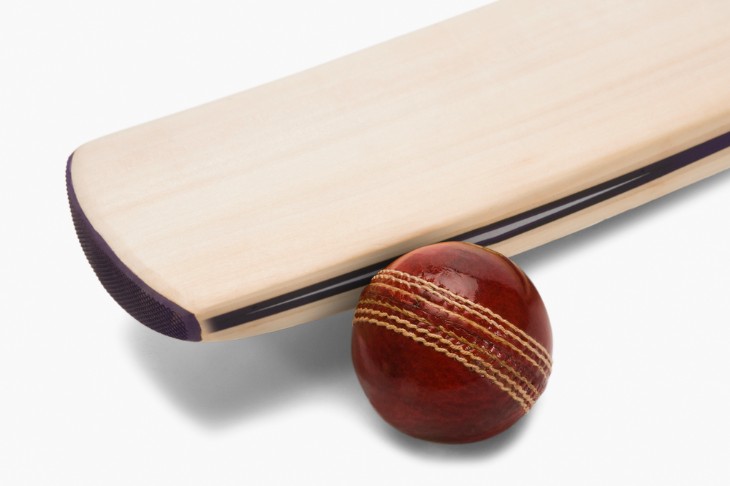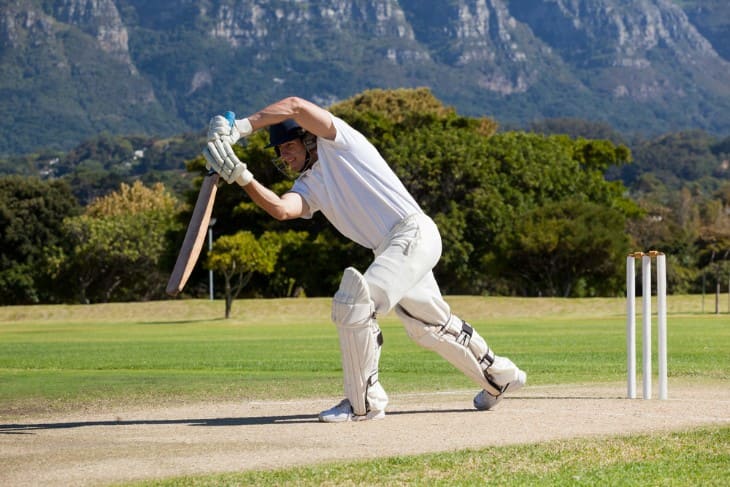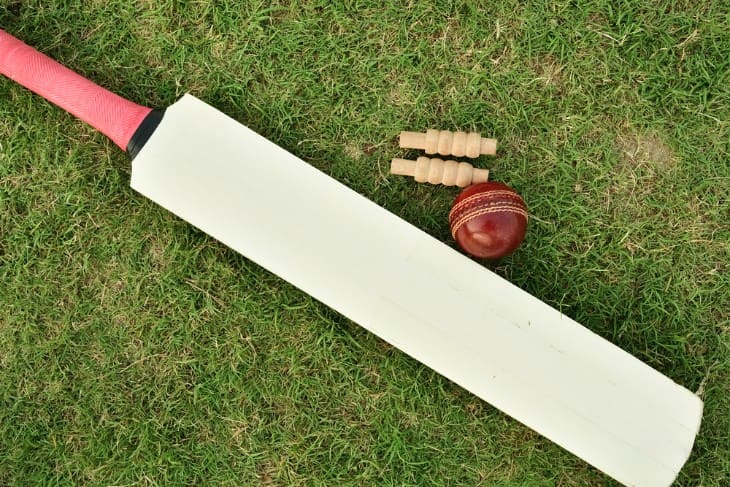Introduction
If you are wondering how to oil a cricket bat then you have arrived at the right place.
When people think of bat maintenance, they usually think of "knock-ins". This is part of the process, but oiling comes first. In the world of cricket, your bat is more than just a piece of equipment; because it is an extension of your skills and also the key to your success on the field. One important aspect of ensuring the longevity and peak performance of your cricket bat is often overlooked: Proper oiling - Applying oil to your cricket bat not only protects its wood but also increases its grip and hitting power.This blog will teach you how to get the best performance and life out of your new bat. If you follow these steps, you will have a great bat with a terrific center that should last for years.
Why Do We Oil Cricket Bats?
“Oiling a bat helps to prevent dryness that can turn your expensive bat into a burnout.”
Cricket bats are primarily made from willow, a natural material that is susceptible to drying out and becoming brittle over time. Oiling the bat acts as a protective barrier against moisture, protecting the willow from excessive water absorption, which can lead to cracks, distortion, and a shortened lifespan.
Additionally, oiling acts as a conditioning process, strengthening the strength and flexibility of the wood. It nurtures a well-maintained surface and promotes a strong sweet spot, helping cricketers deliver powerful and accurate shots. To maximize the durability, longevity, and performance of your cricket bat, regular oiling is an essential practice for every discerning cricketer.

What Oil Should I Use?
Oiling a cricket bat is an essential step in maintaining its longevity and performance. The proper oil not only nourishes the wood but also helps protect it from the elements. When it comes to selecting the right oil for your cricket bat, it's crucial to make an informed choice. Here's a guide on what oil you should use to protect your bat:
1. Linseed Oil: Linseed oil is the most popular choice for oiling a cricket bat. It is a natural oil that penetrates deep into the wood and provides it with excellent nourishment. Raw linseed oil is preferred, as it does not contain any additives, although it may take a little longer to dry.
2. Tung Oil: Tung oil is a natural option known for its durability and ability to enhance the performance of the bat. It dries faster than linseed oil and forms a protective layer on wood. This makes it an excellent choice for professional and experienced players.
3. Almond Oil: Almond oil is a less common but effective option for oiling a cricket bat. It is a natural and light oil that penetrates the wood and provides protection to it. Almond oil dries relatively quickly and has a pleasant scent.
4. Mustard Oil: Mustard oil is used by some players due to its strong nature. It can be effective in nourishing the wood, but it has a strong odor that not everyone likes.
5. Vegetable oil: In a pinch, you can use regular vegetable oil, such as canola or sunflower oil. Although it may not provide the same protection and nourishment as special cricket bat oil, it can still serve the purpose adequately.
When Should I Oil My Bat?
It’s possible to over-oil a bat. This makes the bat too moist and doesn’t provide the right “crack” off the willow. Here's when you should consider oiling your cricket bat:
1. Before first use: A new cricket bat should be oiled before starting to play. This initial oiling helps condition the wood and prepare it for use.
2. Start of the season: At the start of the cricket season, whether you are a professional or an amateur, it is good practice to re-oil your bat. This ensures that it is in top condition for the upcoming matches.
3. Regular Maintenance: Throughout the season, inspect your bat regularly. If you see any dry or rough areas, it's a sign that the wood is drying out. In such cases, re-oil the bat to maintain its performance and durability.
4. Post-rain exposure: If your cricket bat gets wet due to rain or humidity, it is important to dry it thoroughly and then re-oil it. If immediate care is not taken, moisture can cause the wood to become brittle or warp.
5. End of season: Once the cricket season ends, oil your bat thoroughly before storing it for the off-season. This helps protect the wood during downtime.
How to Oil Your Bat ?
Prepare the Bat: Ensure your bat is clean and free of any existing oil or dirt. You can lightly sand the surface if necessary.
Apply the Oil: Apply 2 to 3 spoons of oil on the face of the bat. You can use an old piece of cloth if you want but it doesn't matter if you use your fingers. Make sure you do not apply oil on the splice or within one CM of the splice. The oil should cover the face, sides, heel, and back edge of the bat by about 4 cm. Covering the entire back can make the bat feel flattened and dead.
Let it Dry: After oiling the bat, keep it in a dry place with the bat facing upward on the surface. Place something under the bat to prevent it from bending, which can cause oil to leak out one edge. If all the oil has been absorbed within 24 hours, you can apply some more oil. Repeat this process until it stops absorbing any more oil.
Knocking: You can now buff the bat with a dry cloth and knock-in is the process of gently "knocking" the bat using a mallet, compressing the fibers, and placing it in a stronger position.
Common Mistakes to Avoid Oiling Bat
Here are common mistakes to avoid when oiling your bat:
1. Using the Wrong Oil: One of the most significant mistakes is choosing the wrong type of oil. Linseed oil and tung oil are the best options, specifically formulated for cricket bats. Avoid using cooking oils or unapproved alternatives.
2. Over-Oiling: Applying too much oil can lead to clogged wood fibers, making the bat heavy and reducing its performance. A thin, even coat is all that's required.
3. Neglecting Cleaning: Failing to clean your bat properly before oiling can trap dirt and grime under the oil, potentially causing damage to the wood.
4. Insufficient Drying Time: Rushing the drying process can prevent the wood from absorbing the oil adequately. Give it at least 24 to 48 hours to dry thoroughly in a well-ventilated area.
5. Skipping Regular Maintenance: Your cricket bat needs periodic care. Oiling should be part of your routine maintenance, and you should also check for damage, cracks, or excessive moisture.
6. Forgetting Knocking-In: After oiling, don't forget the crucial step of knocking-in. This process prepares the bat for play and helps prevent damage when facing fast deliveries.

Benefits of oiling a Cricket Bat
The main purpose of oiling is to maintain moisture levels within the blade, and therefore reduce the possibility of wear and tear.
Here are the key benefits of regularly oiling your cricket bat:
1. Conditioning the wood: Oiling helps preserve the moisture of bat willow, keeping it from becoming too dry or brittle. This ensures that the wood remains soft and flexible, reducing the risk of cracks and damage.
2. Better performance: Oiling increases the strength of the bat. This allows the wood to absorb shock more effectively and produce better rebound, improving shot quality.
3. Enhanced Durability: Regular oiling creates a protective layer on the surface of the bat, protecting it from moisture, dirt and wear and tear. This protective barrier can significantly extend the lifespan of bats.
4. Prevents water absorption: Applying oil prevents the bats from absorbing excess moisture, which can lead to swelling and deformity. This is especially important in humid or rainy conditions.
5. Maintains aesthetics: Oiled bats retain their attractive appearance. The natural grains of the wood are exposed, and over time the battens develop a rich, dark color.
6. Tradition and ritual: Oiling is a part of cricket tradition and is often seen as a ritual that connects players to the heritage of the game.
By regularly applying the right type of oil and proper technique to your cricket bat, you can enjoy these benefits and ensure that your bat remains a reliable and high-performing tool on the cricket field for years to come.
Bottom Line
A little maintenance can go a long way. Most village cricketers have to learn some level of bat care, but fortunately, with Village Cricket Bats, you don't have to spend hours oiling and knocking down the bat before you start playing.
Use the right oil like linseed or tung, apply it evenly, let it dry, and repeat as needed. Properly oiled bats have enhanced performance, longer lifespans, and a classic appearance.
For more information:


